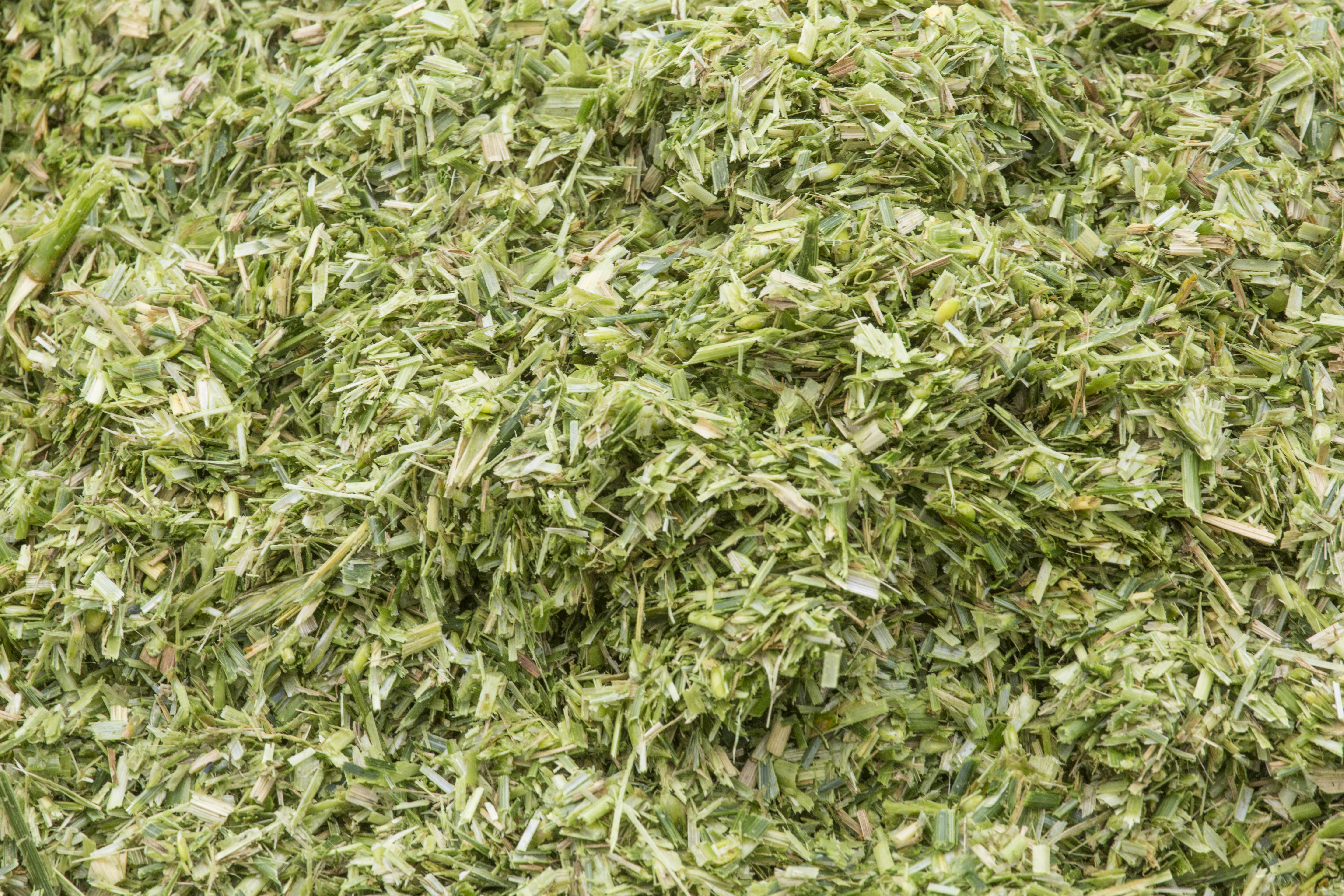Grass silage
Grass
The 1970’s and 80’s saw a dramatic shift from conserving grass as highly weather-dependent hay to the more flexible system of producing grass silage. The introduction of big bale silage brought the additional benefits of transportation, flexible storage and feeding.

Grass silage is basically pickled grass. The aim is to retain as much feed value as possible by encouraging lactic acid bacteria to ferment grass sugar to produce lactic acid.
The lactic acid lowers the pH and prevents the growth of spoilage micro-organisms, allowing a stable preservation of grass as silage. To achieve this, there must be sufficient sugar available and fermentation must occur as quickly as possible in and air must be excluded throughout (anaerobic conditions).
This can be done in a silage clamp or in big bales. Both have the same objectives:
- Rapid removal of air (compaction)
- Rapid fermentation of grass sugars to lactic acid
- Maintenance of anaerobic conditions in the clamp/bale during storage
- Growing and harvesting factors influencing forage quality.
Getting the right microbial population is essential to make good silage. High numbers of the right kind of lactic acid bacteria (LAB) are what you want for a fast, efficient fermentation. They will outcompete less desirable bacteria that waste sugars by fermenting them to weaker acids, eg acetic acid, or non-acid alcohols. A fast fermentation to a low, stable pH will also prevent a clostridial fermentation.
Growing
- Follow good crop management practices to encourage yields without reducing sugars.
- Avoid late application of fertiliser. Apply nitrogen at least eight weeks before mowing.
- Try not to surface apply slurry within ten weeks of mowing (and preferably not at all) due to the presence of undesirable micro-organisms.
- Injecting can be done up to 2 weeks from harvest.
- When reseeding, select the variety which meets your requirements for the harvest date, yield, quality, soil type and climate.
Wilting
- Rapid wilt (24 hours maximum) to about 30% DM to reduce effluent and concentrate sugars if conditions permit.
- As a guideline, 1% of moisture is lost per hour of sunlight in bright conditions. It can be greater with mower-conditioners and tedding.
- When wilting, remember that high DM grass (35%+) has a greater risk of mould.
- Wilting for 12 hours or more has become standard practice to reach the higher dry matter silage required by the modern dairy cow. However, longer wilting results in the proliferation of spoilage organisms, leading to the loss of valuable nutrients.
Advantages of Grass Silage
- Easy to grow
- Less weather dependent than hay
- High protein
- Grazing balancer
- Quantity vs quality flexibility
- Multiple cuts possible
- Allows big bale system flexibility
Disadvantages of Grass Silage
- Variable fermentation and quality
- Can be low pH (pH <4)
- Can be labour intensive
- Weather dependent
- Later cuts more costly